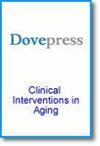中国社区老年人骨骼肌质量估算公式的开发与验证
IF 3.7
3区 医学
引用次数: 0
摘要
目的:本研究旨在建立通过人体测量参数或结合身体功能参数估算社区老年人肌肉质量的方程,为肌肉质量评估提供一种简单的方法:在这项横断面描述性研究中,共从社区招募了 1537 名老年人,并接受了身高、体重、上臂和小腿围度、握力和步行速度的测量。使用生物电阻抗分析法(BIA)测量了身体成分,包括骨骼肌质量(ASM)。参与者被随机分为开发组和验证组。开发组采用逐步多元线性回归法建立方程。随后,采用皮尔逊相关系数、Bland-Altman 图、配对 t 检验、类内相关系数 (ICC) 和配对样本 t 检验来评估方程的有效性:除验证组的年龄(P = 0.746)外,所有参数均与 ASM 有明显相关性(r = 0.195~0.795, P < 0.001)。最理想的人体测量方程是 [调整后 R2 = 0.911,估计标准误差 (SEE) = 1.311,P < 0.001]。比较而言,该方程显示出较高的相关系数(r = 0.951,P < 0.001)和 ICC(ICC = 0.950,P < 0.001)。BIA 测量的 ASM 与估计的 ASM 之间没有发现明显差异。Bland-Altman 图显示,估计 ASM 与 BIA 测量 ASM 的平均差异为 0 千克,ASM 的一致性极限为-2.70~2.60 千克。此外,加入身体功能并没有明显改善调整后的 R2 和 SEE:人体测量方程为估算社区老年人的ASM提供了一种简单可靠的实用替代方法。 关键词:附着肌质量;人体测量;身体功能;估算方程;老年人本文章由计算机程序翻译,如有差异,请以英文原文为准。
Development and Validation of Estimation Equations for Appendicular Skeletal Muscle Mass in Chinese Community-Dwelling Older Adults
Purpose: This study aimed to establish equations for estimating muscle mass through anthropometric parameters or together with physical function parameters in the community-dwelling older adults, providing a simple way of muscle mass assessment.
Methods: In this cross-sectional descriptive study, a total of 1537 older adults were recruited from the community and accepted the measurements of height, weight, upper arm and calf circumferences, grip strength, and walking speed. Body composition including appendicular skeletal muscle mass (ASM) was measured using bioelectrical impedance analysis (BIA). Participants were randomly divided into the development or validation group. Stepwise multiple linear regression was applied to develop equations in the development group. Thereafter, Pearson correlation coefficients, Bland-Altman plots, paired t-test, intraclass correlation coefficient (ICC) and paired-samples t-tests were used to assess the validity of the equations.
Results: All parameters were significantly correlated with ASM (r = 0.195~0.795, P < 0.001) except for the age in the validation group (P = 0.746). The most optimal anthropometric equation was: [adjusted R2 = 0.911, standard error of the estimate (SEE) = 1.311, P < 0.001]. Comparatively speaking, this equation showed high correlation coefficient (r = 0.951, P < 0.001) and ICC (ICC = 0.950, P < 0.001). No significant differences were found between BIA-measured ASM and the estimated ASM. The Bland-Altman plot showed that the mean difference between the estimated ASM and BIA-measured ASM was 0 kg and the limits of agreement of ASM was − 2.70~2.60 kg. Furthermore, inclusion of physical function did not significantly improve the adjusted R2 and SEE.
Conclusion: The anthropometric equation offers a practical alternative simple and dependable method for estimating ASM in community-dwelling older adults.
Keywords: appendicular muscle mass, anthropometry, physical function, estimation equation, older adults
Methods: In this cross-sectional descriptive study, a total of 1537 older adults were recruited from the community and accepted the measurements of height, weight, upper arm and calf circumferences, grip strength, and walking speed. Body composition including appendicular skeletal muscle mass (ASM) was measured using bioelectrical impedance analysis (BIA). Participants were randomly divided into the development or validation group. Stepwise multiple linear regression was applied to develop equations in the development group. Thereafter, Pearson correlation coefficients, Bland-Altman plots, paired t-test, intraclass correlation coefficient (ICC) and paired-samples t-tests were used to assess the validity of the equations.
Results: All parameters were significantly correlated with ASM (r = 0.195~0.795, P < 0.001) except for the age in the validation group (P = 0.746). The most optimal anthropometric equation was: [adjusted R2 = 0.911, standard error of the estimate (SEE) = 1.311, P < 0.001]. Comparatively speaking, this equation showed high correlation coefficient (r = 0.951, P < 0.001) and ICC (ICC = 0.950, P < 0.001). No significant differences were found between BIA-measured ASM and the estimated ASM. The Bland-Altman plot showed that the mean difference between the estimated ASM and BIA-measured ASM was 0 kg and the limits of agreement of ASM was − 2.70~2.60 kg. Furthermore, inclusion of physical function did not significantly improve the adjusted R2 and SEE.
Conclusion: The anthropometric equation offers a practical alternative simple and dependable method for estimating ASM in community-dwelling older adults.
Keywords: appendicular muscle mass, anthropometry, physical function, estimation equation, older adults
求助全文
通过发布文献求助,成功后即可免费获取论文全文。
去求助
来源期刊

Clinical Interventions in Aging
GERIATRICS & GERONTOLOGY-
CiteScore
6.20
自引率
2.80%
发文量
193
期刊介绍:
Clinical Interventions in Aging, is an online, peer reviewed, open access journal focusing on concise rapid reporting of original research and reviews in aging. Special attention will be given to papers reporting on actual or potential clinical applications leading to improved prevention or treatment of disease or a greater understanding of pathological processes that result from maladaptive changes in the body associated with aging. This journal is directed at a wide array of scientists, engineers, pharmacists, pharmacologists and clinical specialists wishing to maintain an up to date knowledge of this exciting and emerging field.
 求助内容:
求助内容: 应助结果提醒方式:
应助结果提醒方式:


